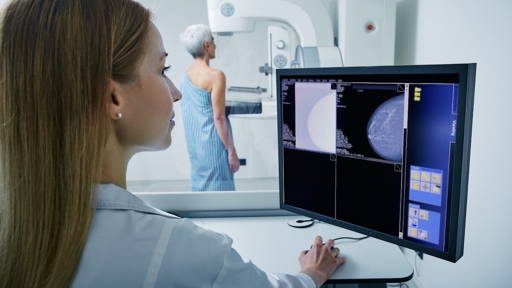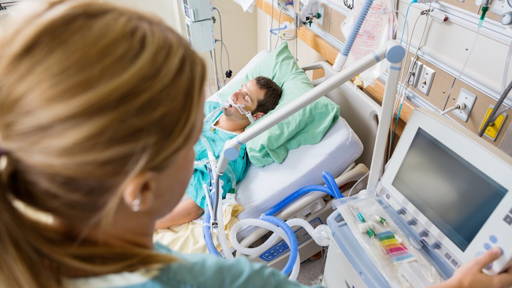A smart AI scanner that automatically scans the feet and lower legs at home when the patient gets up could potentially prevent hospital admissions for heart failure patients. The technology uses AI-driven ‘foot recognition’ and, according to new research presented at the British Cardiovascular Society conference, can detect a deterioration in health up to 13 days before a hospital admission.
The compact AI scanner was developed by Cambridge start-up Heartfelt Technologies and is placed next to the bed. This allows the user's feet and lower legs to be scanned automatically every day. The scanner can detect signs of fluid accumulation (edema), which is an important early symptom of worsening heart failure. Using AI and image recognition technology, the AI-driven scanner records real-time changes in leg volume. The person does not need to perform any actions themselves.
FOOT study
In the so-called FOOT study involving 26 patients, the technology proved capable of correctly predicting five out of six hospital admissions due to heart failure. The study also showed that conventional methods, such as daily weighing, were less effective. Thanks to the AI scanner, warnings of worsening heart failure were given eight to nineteen days before hospital admission. This enabled doctors to adjust medication or take other action in good time, before hospitalization was necessary. “The device functions as a virtual nurse who monitors the patient's health on a daily basis,” said Dr. Philip Keeling, cardiologist and research leader.
Ease of use and privacy were also taken into account in the development of the AI scanner. For example, only the lower 50 cm of the lower leg and foot are scanned and recorded, and the patient can keep their (thin) socks on if they wish. The scanner does not need to be connected via Wi-Fi, which, according to the researchers, also makes it easy to use for elderly people or those who do not have an internet connection.
Personalized heart care at home
According to the researchers, the scanner can be a valuable addition to the work of heart failure nurses, especially given the current staff shortage. “For many patients, this means peace of mind. The scanner takes over daily monitoring and automatically calls in medical assistance when necessary,” says Keeling.
At the end of the six-month study, more than 80 percent of participants said they wanted to continue using the scanner. The technology shows potential not only for home use, but also for care facilities such as nursing homes. For further upscaling, however, work still needs to be done on refining the identification capabilities, for example when used in busy care locations.
Professor Bryan Williams, Chief Scientific and Medical Officer at the British Heart Foundation, sees the innovation as a promising example of how technology contributes to future-proof, preventive care. “By monitoring essential signs of heart failure at home, we can reduce hospital admissions and improve quality of life. This is exactly the kind of innovation we need to transform heart care in a sustainable way.”
AI technology for better heart care
Last year, Philips introduced an AI-based cardiovascular ultrasound platform, integrated into the EPIQ CVx and Affiniti CVx systems, which has received FDA 510(k) approval. This technology automates measurements and streamlines workflows, enhancing the speed and consistency of cardiac imaging. It aids in the early detection of heart conditions, including heart failure, by accurately identifying regional wall motion abnormalities (RWMAs), which are indicators of cardiovascular events. The AI algorithms, trained on anonymized clinical data, improve diagnostic reliability and reduce the need for repeat scans, ultimately leading to more efficient patient care and outcomes.
Earlier this year, we reported on the development of another AI model capable of detecting hypertrophic cardiomyopathy (HCM) more quickly and accurately. Instead of simply providing a risk score, the model now offers a quantitative probability, such as a 60% chance of HCM. The analysis of nearly 71,000 ECGs identified 1,522 possible cases of HCM, which were then confirmed by medical records and imaging. This improved accuracy enables physicians to identify patients at increased risk earlier and refer them more effectively, reducing the likelihood of serious complications such as sudden cardiac death.








